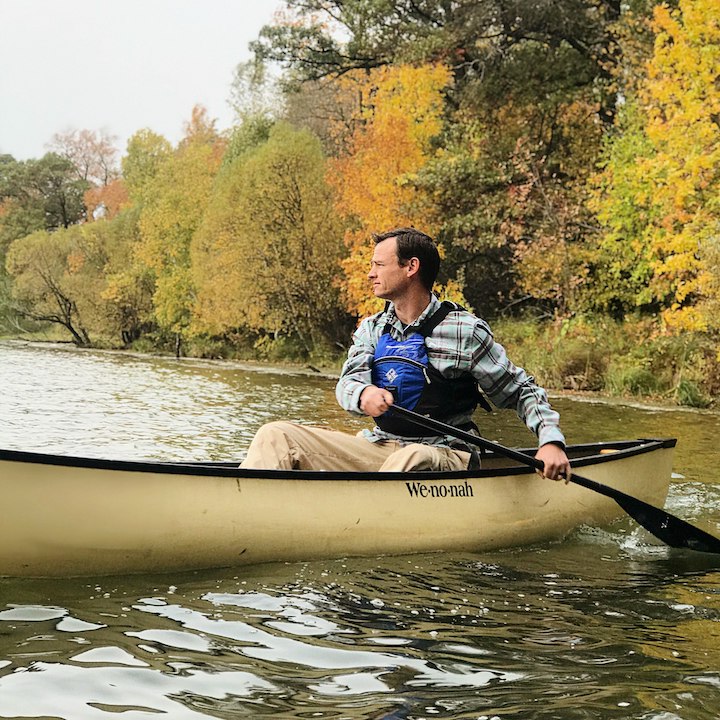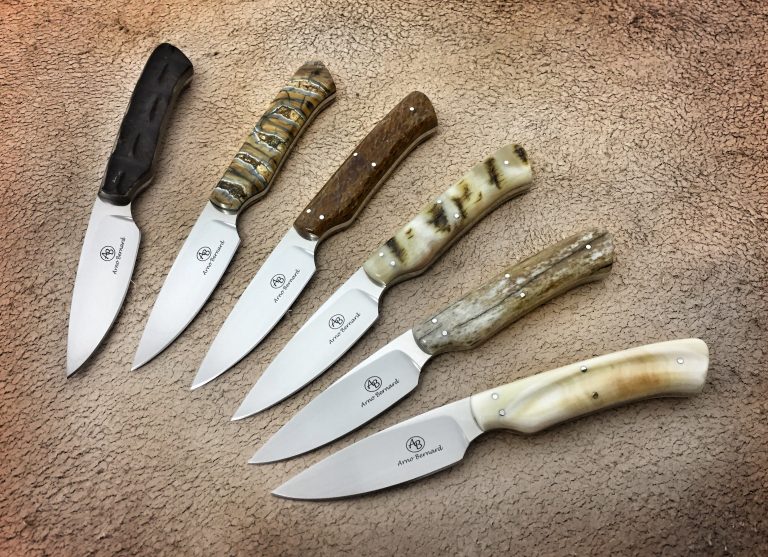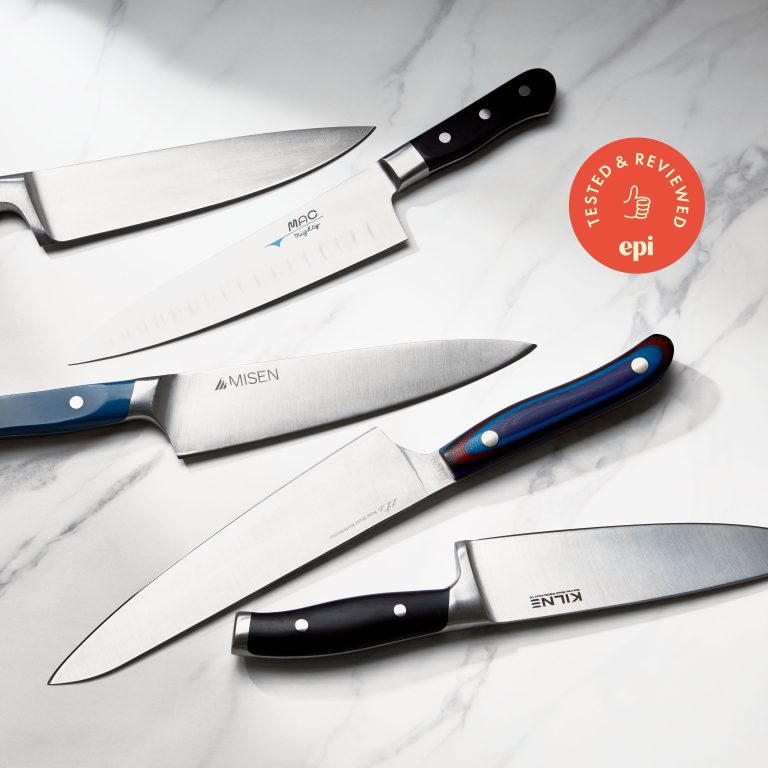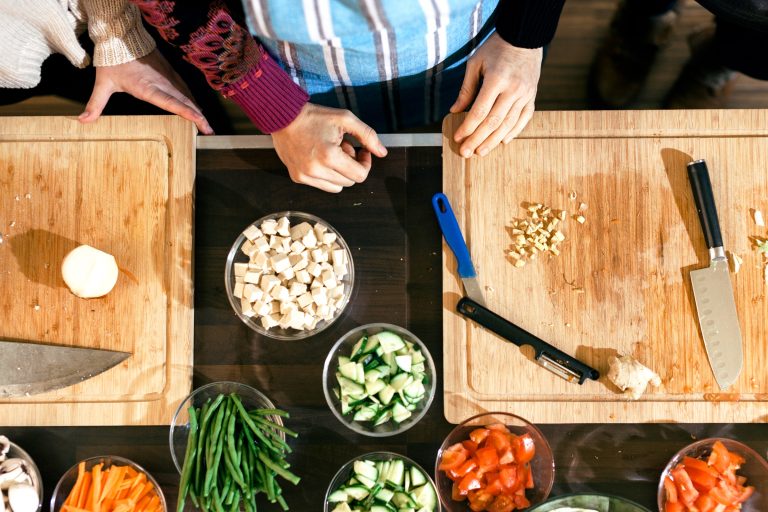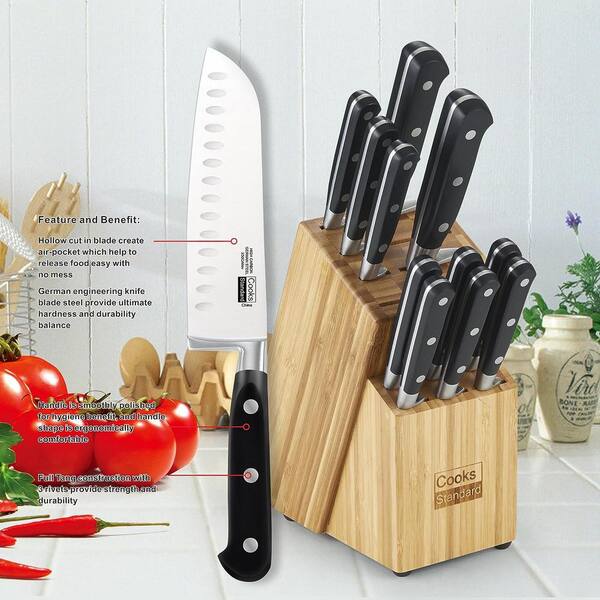Knife Safety in the Wilderness: Hunting Knife Best Practices
Proper knife safety in the wilderness is crucial for hunting enthusiasts to avoid injuries. A hunting knife, when used correctly, can be an essential tool but can also become dangerous if mishandled.
We will explore the best practices for using a hunting knife in the wilderness. By following these guidelines, hunters can ensure their safety and make the most out of their hunting experience. From selecting the right knife to handling and storing it properly, we will cover all the necessary steps to minimize potential accidents and maximize the utility of this essential tool.
So, let’s dive into the world of knife safety in the wilderness and learn how to handle hunting knives with confidence and caution.
Understanding The Importance Of Knife Safety
Knife safety is paramount when it comes to wilderness activities such as hunting. Understanding best practices for handling hunting knives ensures a safe and enjoyable experience. Get to know the importance of knife safety in the wilderness to protect yourself and others.
Whether you’re an experienced outdoors enthusiast or a novice adventurer, understanding the importance of knife safety is paramount when it comes to your overall safety in the wilderness. A hunting knife is a versatile tool that can assist you in various tasks such as setting up camp, preparing food, or even defending yourself in emergency situations.
However, if not used properly, a knife can quickly turn into a hazardous object. By adhering to essential knife safety practices, you can mitigate the risk of accidents and ensure a safe and enjoyable outdoor experience.
The Essential Role Of Knife Safety In Outdoor Activities:
- Accident prevention: Understanding and implementing knife safety measures is crucial in preventing accidents while using a hunting knife. By following proper techniques, you can avoid potential injuries to yourself and others.
- Tool maintenance: By practicing knife safety, you not only protect yourself but also prolong the lifespan of your hunting knife. Proper maintenance, such as keeping the blade clean and avoiding unnecessary strain, will make your knife last longer and perform better.
- Respect for nature: Knife safety is not only about personal safety but also about being responsible in the wilderness. By handling your knife with care and disposing of waste properly, you can minimize your impact on the environment and preserve its natural beauty.
- Confidence and competence: When you have a good understanding of knife safety practices, you can handle your hunting knife with confidence and competence. This assurance allows you to tackle various outdoor tasks efficiently and effectively.
The Consequences Of Neglecting Knife Safety Measures:
- Potential injuries: Neglecting knife safety measures can lead to severe injuries. Mishandling a hunting knife can result in cuts, punctures, or even amputations. These injuries not only cause immediate pain but can also have long-term consequences.
- Increased risk: Failing to prioritize knife safety increases the overall risk associated with outdoor activities. The potential for accidents or emergencies rises significantly when individuals fail to take proper precautions.
- Damaged equipment: Lack of knife safety measures can lead to damaged equipment. Improper handling or using the knife for tasks it was not designed for can lead to blade chipping, handle damage, or even complete loss of the knife.
- Negative environmental impact: Ignoring knife safety can have adverse effects on the environment. Leaving waste behind, damaging trees or other natural elements with your knife, or causing an accident in a protected area can harm the ecosystems you are exploring.
By understanding the importance of knife safety, you can make informed decisions that prioritize your well-being and the well-being of others in the wilderness. Implementing proper knife safety measures not only prevents accidents but also demonstrates responsible behavior towards nature.
So, remember to follow essential knife safety practices and enjoy your outdoor adventures with confidence, competence, and a deep respect for the environment.
Choosing The Right Hunting Knife
Make safety a priority when choosing the right hunting knife for your wilderness adventures. Follow best practices to ensure a safe and enjoyable experience.
Understanding The Different Types Of Hunting Knives
When venturing into the wilderness for hunting, it’s crucial to equip yourself with the right tools, and a hunting knife is at the top of that list. A well-chosen hunting knife not only ensures your safety but also enhances your overall hunting experience.
But with so many options available, it’s essential to understand the different types of hunting knives to make an informed decision.
Here are the main types of hunting knives to consider:
- Fixed Blade Knives: These knives have a solid, non-folding blade that provides stability and strength. They are durable and versatile, suitable for various hunting tasks.
- Folding Knives: These knives have a hinged blade that can be folded into the handle. They are compact, easy to carry, and usually come with a locking mechanism for safety.
- Skinning Knives: Designed specifically for field dressing and skinning game, these knives have a specialized curved blade that facilitates precision and efficiency.
- Boning Knives: Boning knives are used for separating meat from bones and cutting through joints. They have a narrow, flexible blade that allows for easy maneuverability.
- Gut Hook Knives: Gut hook knives feature a small, sharpened hook on the spine near the tip. They are used to make clean and precise cuts when gutting game without puncturing internal organs.
- Multi-purpose Knives: These knives are designed for versatility and often come with additional tools like saws, screwdrivers, and bottle openers. They are handy for various tasks beyond hunting.
Understanding the different types of hunting knives allows you to choose the one that suits your specific needs and preferences. Take into consideration the tasks you’ll be performing during your hunting trip and choose accordingly.
Evaluating The Features And Qualities Of A Suitable Hunting Knife
When selecting a hunting knife, it’s important to evaluate its features and qualities to ensure it meets your requirements and is up to the task. Here are some key factors to consider:
- Blade Material: Look for knives made of high-quality stainless steel or carbon steel, as these materials offer durability, corrosion resistance, and sharpness retention.
- Blade Length: Consider the intended use of the knife. A shorter blade is ideal for precision tasks like skinning, while a longer blade is more versatile and better for tasks such as field dressing and camp chores.
- Handle Design and Material: The handle should provide a comfortable grip and good control. Choose a material like rubber, wood, or synthetic materials that offer a secure grasp even in wet conditions.
- Tang: A full tang knife, where the blade extends into the handle, provides strength and durability. Avoid knives with partial tangs as they are prone to breakage.
- Ease of Maintenance: Look for knives that are easy to clean, sharpen, and maintain. A hunting knife should withstand the rigors of wilderness use and be easy to keep in optimal condition.
- Sheath: Consider the quality and functionality of the sheath. It should securely hold the knife, allow easy access, and have a reliable retention system.
By evaluating these features and qualities, you can choose a hunting knife that not only meets your specific needs but also ensures a safer and more enjoyable hunting experience in the wilderness.
Knife Safety Measures For Outdoor Enthusiasts
For outdoor enthusiasts, following proper knife safety measures is crucial in the wilderness. This article explores the best practices for using hunting knives, ensuring a safe and enjoyable experience in nature.
Heading: Proper Handling Techniques For A Hunting Knife
- Grip the knife firmly, ensuring control and stability.
- Always maintain a safe distance from others to prevent accidents.
- When using the knife, keep your fingers away from the blade’s edge.
- Use a solid cutting surface like a stump or chopping block to avoid slips or injuries.
- Be mindful of the knife’s position and direction while cutting or carving.
Heading: Storing And Transporting Knives Safely
- Always sheath the knife to protect the blade and prevent accidental cuts.
- Consider using a knife roll or sheath with a secure strap for safe storage during transportation.
- Keep the knife separate from other gear to prevent damage and injuries.
- Store knives in a cool and dry place to avoid rust and corrosion.
- When transporting knives, ensure they are securely packed to prevent accidental injuries or loss.
Heading: Ensuring Blade Sharpness For Optimal Safety
- Regularly inspect the blade for any signs of rust or damage.
- Use a sharpening stone or honing rod to maintain the knife’s sharpness.
- Ensure a consistent angle while sharpening the blade for optimal cutting performance.
- Clean the blade before sharpening to remove any dirt or debris that may affect the process.
- Test the blade’s sharpness carefully before use to avoid unexpected accidents.
Heading: Knife Maintenance And Cleaning Tips
- Regularly clean the knife with mild soap and warm water to remove dirt and residue.
- Dry the knife thoroughly after cleaning to prevent rust formation.
- Apply a thin coat of oil to the blade to protect against corrosion during storage.
- Avoid using harsh chemicals or abrasive materials that can damage the blade’s surface.
- Inspect the handle regularly for any loose screws or signs of wear, ensuring overall stability.
Remember, prioritizing knife safety is essential to enjoy a worry-free wilderness adventure. By following proper handling techniques, storing and transporting knives safely, ensuring blade sharpness, and performing regular maintenance and cleaning, outdoor enthusiasts can reduce the risk of accidents and maximize their safety.
Stay sharp, stay safe!
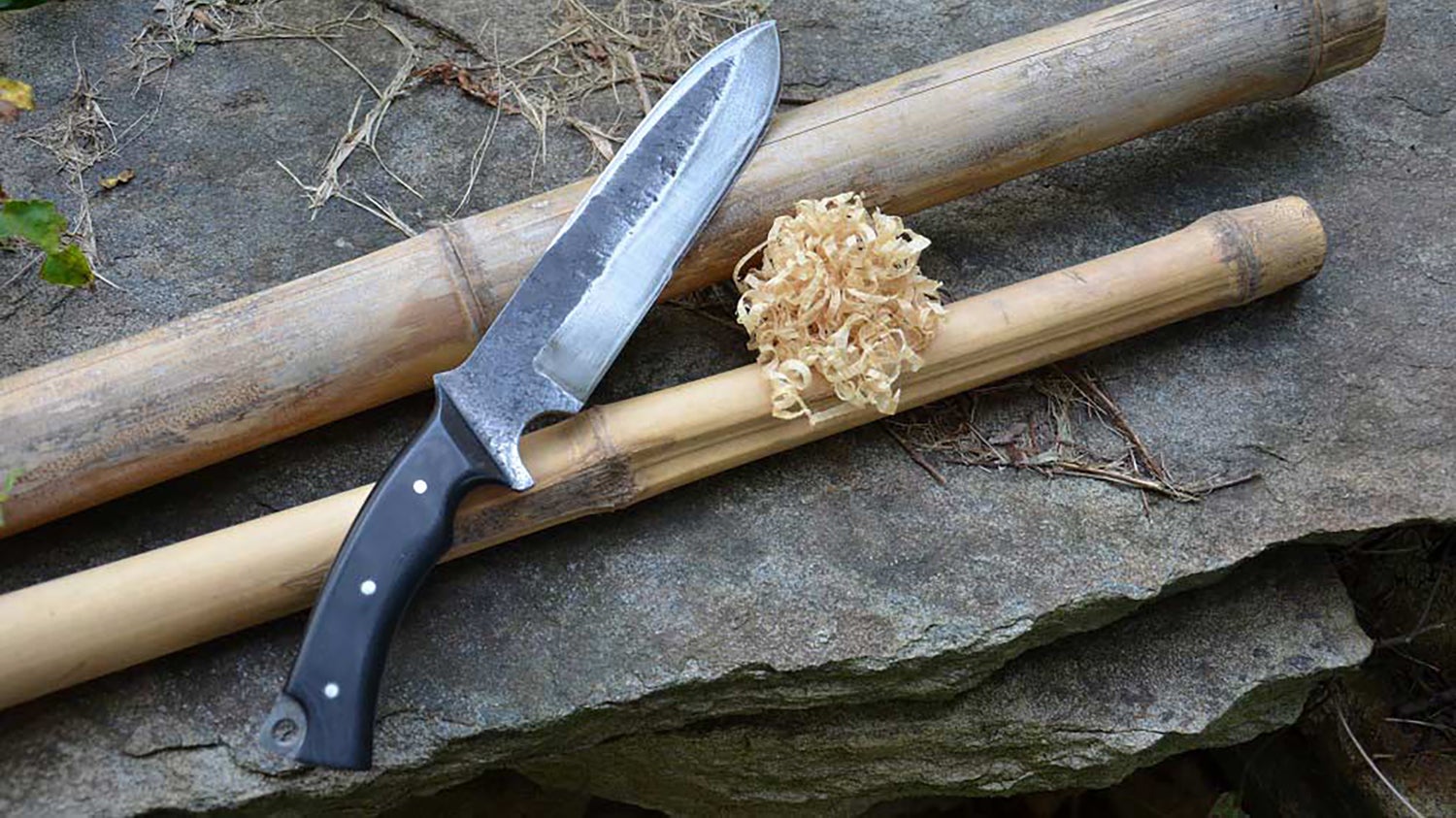
Credit: www.popsci.com
Ensuring Proper Handling Techniques
Proper handling techniques are essential for knife safety in the wilderness. Learn best practices to ensure safe and efficient use of hunting knives.
Grip Techniques And Hand Positioning
- Proper grip technique is crucial for safe handling of a hunting knife in the wilderness. Here are some key points to remember:
- Hold the knife firmly but not too tightly to maintain control.
- Position your index finger along the spine of the blade for better balance.
- Ensure your thumb rests on the handle to prevent accidental slippage.
- Keep your fingers away from the cutting edge to avoid accidental cuts.
Safe Methods For Opening And Closing A Folding Knife
- Opening and closing a folding knife requires attention to prevent any accidents. Follow these safe practices:
- Use your dominant hand to hold the knife securely.
- Hold the knife away from your body and others while opening or closing it.
- Apply slow and deliberate pressure to open the blade fully.
- When closing the knife, carefully release the lock mechanism and fold the blade gently.
Avoiding Dangerous Blade Actions
- To stay safe while using a hunting knife in the wilderness, be cautious of the following dangerous blade actions:
- Never use excessive force or jerky movements when cutting or slicing.
- Avoid using the knife in a way that causes the blade to come close to your body parts.
- Maintain a safe distance from others while using the knife to prevent accidental injuries.
- Always keep the blade sharp to reduce the risk of it slipping during use.
Remember, practicing proper grip techniques, employing safe methods for opening and closing a folding knife, and avoiding dangerous blade actions are essential for ensuring the safety and protection of yourself and others while using a hunting knife in the wilderness.
Safely Storing And Transporting Knives
Properly storing and transporting knives is essential for wilderness safety. Follow these best practices to ensure that your hunting knife is secure and ready for use in the great outdoors.
When it comes to knife safety in the wilderness, it’s crucial to not just focus on using the knife responsibly, but also on safely storing and transporting it. Whether you’re out camping, hiking, or hunting, having secure and practical sheaths and cases, following responsible carrying tips, and knowing the storage options when the knife is not in use are all essential for maintaining safety.
Secure And Practical Sheaths And Cases:
- A good quality sheath or case is crucial for safely transporting your hunting knife. Look for options that are durable, made from materials like leather or sturdy synthetic fabrics.
- Find a sheath or case that fits your knife securely, ensuring it won’t slip out or get loose during transportation.
- Some sheaths come with additional features like belt loops or clips, making it easier to attach to your backpack or waist for easy access when required.
- Opt for sheaths or cases that provide protection not only from accidental cuts but also from elements like moisture that could cause damage to the knife.
Tips For Carrying Knives Responsibly:
- When carrying a knife, always ensure it is in its sheath or case. This prevents accidental injuries and also keeps the blade protected.
- Keep the knife securely fastened during transportation to minimize the risk of it coming loose and causing harm.
- Avoid carrying the knife openly in your hand, as it increases the chances of accidents and injuries.
- Be mindful of others around you when carrying a knife, especially in crowded areas or when hiking with a group. Ensure that the blade is pointed downwards and that it’s not accessible to others.
Storage Options When Not In Use:
- When your hunting knife is not in use, it’s important to store it in a safe and secure place to prevent accidents and maintain its longevity.
- Consider using a knife block or magnetic strip to store your knife in the kitchen. These options keep the blade protected and within easy reach when needed.
- If you’re camping or traveling, store your knife in a dedicated pouch or case. This prevents the blade from getting damaged and also ensures it doesn’t accidentally harm anyone.
- Always clean and dry your knife before storing it to prevent rusting or corrosion. Add a thin layer of food-grade oil to keep the blade in top condition.
Remember, knife safety is essential whether you’re using it for hunting, camping, or any outdoor activities. By investing in secure sheaths and cases, following responsible carrying tips, and storing your knife properly when not in use, you can ensure the safety of yourself and others around you.
Stay prepared, stay safe!
Maintaining Blade Sharpness
Proper knife maintenance is crucial for wilderness safety. Learn the best practices for maintaining blade sharpness to ensure a safe and successful hunting experience.
Having a sharp blade is essential for any hunter venturing into the wilderness. A dull knife not only hampers your cutting efficiency but can also increase the risk of accidents. To ensure your hunting knife is always in its prime condition, follow these best practices for maintaining blade sharpness.
Knife Sharpening Methods And Tools
Keeping your hunting knife’s blade sharp is a relatively simple process, and there are several methods and tools you can use for optimal results:
- Sharpening stones: These come in various grits and are highly effective for reestablishing a razor-sharp edge. Begin with a coarser grit stone and gradually progress to finer options for a polished finish.
- Honing rods: Also known as sharpening steels, these are ideal for minor touch-ups between more thorough sharpening sessions. Run the blade along the rod at the appropriate angle to restore sharpness.
- Electric sharpeners: These are convenient tools that automate the sharpening process. They often feature multiple sharpening stages, making it quick and easy to achieve the desired sharpness.
Regular Inspection For Sharpness
Regularly checking the sharpness of your hunting knife’s blade is crucial for maintaining its cutting efficiency and reducing the risk of accidents. Consider the following steps when inspecting its sharpness:
- Visual examination: Carefully inspect the blade’s edge for any dull or blunted sections. Look for inconsistencies in reflection and a lack of keenness.
- Paper test: Test the blade’s sharpness by attempting to cleanly slice through a sheet of paper. A sharp blade will effortlessly glide through the paper without tearing or snagging.
- Gentle touch test: Gently run your finger along the blade’s edge, being cautious not to apply too much pressure. A sharp blade will generate a noticeable biting sensation, while a dull one will feel dull and lack resistance.
The Dangers Of A Dull Blade
Using a dull hunting knife blade poses serious risks to your safety and overall hunting experience. Some key dangers associated with a dull blade include:
- Increased slippage: A dull blade requires more force to cut through materials, increasing the risk of slipping and potentially injuring yourself or others.
- Inefficient cutting: Dull blades require multiple attempts to achieve clean cuts, leading to frustration and a waste of time in the field.
- Accidental cuts: Due to the increased force needed, a dull blade can easily veer off course, causing accidental cuts and potential damage to the surrounding area.
- Poor game handling: When field dressing game, a dull blade can make the process messy and difficult, compromising the quality of meat and creating unhygienic conditions.
Remember, maintaining blade sharpness should be an integral part of your outdoor routine. Taking the time to regularly sharpen your hunting knife will not only enhance your cutting performance but also contribute to a safe and successful hunting experience in the wilderness.
Knife Maintenance And Cleaning Tips
Maintaining and cleaning your hunting knife is essential for wilderness safety. Follow these tips to ensure your knife remains sharp and in top condition for your outdoor adventures.
Proper Cleaning Techniques:
Properly cleaning your hunting knife is essential for both preserving its lifespan and preventing any potential safety hazards. Here are some effective techniques for maintaining and cleaning your knife:
- Use mild soap or dishwashing detergent: It’s important to avoid harsh chemicals that can damage the blade or handle of your knife. Stick to mild soap or dishwashing detergent, mixed with warm water, for a gentle yet effective cleaning solution.
- Wipe down the blade: With a soft cloth or sponge, gently wipe down the blade of your knife, making sure to remove any dirt, debris, or residue. Pay close attention to the cutting edge, as this is where build-up can often occur.
- Dry thoroughly: After cleaning, ensure that you thoroughly dry your knife to prevent any moisture from causing rust or corrosion. Use a clean, dry cloth to carefully dry the blade and handle before storing it away.
- Never soak the knife: Avoid submerging your hunting knife in water or any cleaning solution for an extended period. Water can seep into the handle and damage internal components, such as the hinge in folding knives.
- Remove stubborn stains and rust: If you notice stubborn stains or rust spots on your knife, use a soft brush or toothbrush to gently scrub them away. You can also apply a small amount of baking soda to the bristles to aid in the removal process.
- Pay attention to pivot points: For folding knives, it’s important to clean and maintain the pivot points regularly. Use a cotton swab or soft cloth to clean out any debris or dirt that may have accumulated in these areas.
- Oil the blade and pivot points: To prevent rust and ensure smooth operation, apply a thin layer of oil to the blade and pivot points. Use a lubricant specifically designed for knives, such as mineral oil or knife oil, and wipe away any excess oil after application.
Preventing Rust And Corrosion:
Rust and corrosion can significantly compromise the functionality and longevity of your hunting knife. Fortunately, by following a few preventive measures, you can effectively protect your knife against these issues. Here’s what you need to do:
- Keep your knife dry: After using your knife in wet conditions or cleaning it, make sure to dry it thoroughly. Moisture is the primary catalyst for rust and corrosion, so removing any water from the blade and handle is crucial.
- Store your knife properly: When not in use, store your hunting knife in a dry and well-ventilated area. Avoid leaving it in damp or humid environments, as this increases the risk of rust formation.
- Use a protective coating: Applying a protective coating, such as a thin layer of oil or silicone, can provide an additional barrier against rust and corrosion. This coating helps to repel moisture and inhibits oxidation.
- Regularly inspect for damage: Routinely inspect your hunting knife for any signs of damage or corrosion. Catching these issues early allows you to address them promptly, preventing further deterioration.
- Clean and oil after each use: To prevent rust from setting in, it’s crucial to clean and oil your knife after every use. Regular maintenance not only safeguards your knife but also helps it retain its sharpness and effectiveness.
Lubrication And Care For Moving Parts:
Proper lubrication and care for the moving parts of your hunting knife, particularly in folding knives, can enhance its performance and longevity. Follow these tips to ensure optimal functionality:
- Utilize appropriate lubricants: Use lubricants specifically formulated for knives, such as Teflon-based or graphite lubricants. These products provide smooth movement and reduce friction between the moving parts.
- Clean and lubricate pivot points: Regularly clean out accumulated dirt, grime, or debris from the pivot points using a cotton swab or soft cloth. Once cleaned, apply a small amount of lubricant to ensure the smooth opening and closing of the knife.
- Avoid over-lubrication: While lubrication is necessary, excessive application can attract dirt and debris, leading to potential malfunctions. Apply a thin and even layer of lubricant, wiping away any excess to maintain optimal performance.
- Test the blade’s movement: After lubricating the moving parts, test the blade’s movement to ensure smooth, effortless opening and closing. If you notice any stiffness or resistance, clean and lubricate the pivot points further.
- Regularly inspect and clean internal components: For folding knives, periodically disassemble the knife to clean and inspect the internal components, such as the washers or ball bearings. This removes accumulated dirt and allows for proper maintenance.
Wilderness Knife Safety Tips
Discover essential knife safety tips for the wilderness, ensuring optimal hunting practices. Stay safe and secure with these expert recommendations. Whether you’re an experienced hunter or a beginner, follow these guidelines to handle your hunting knife with care.
When venturing into the wilderness, it is essential to prioritize knife safety. Whether you are camping, hiking, or hunting, knowing how to use a knife safely can prevent accidents and ensure a successful outdoor experience. Let’s explore some valuable tips for practicing knife safety in the wilderness:
Choosing The Appropriate Knife For Specific Wilderness Activities
When selecting a knife for your wilderness adventures, consider the specific activity you will be engaging in. Different activities require different types of knives. Here are some guidelines to help you choose the appropriate knife:
- Camping: Opt for a versatile and sturdy knife that can handle tasks like preparing food, cutting rope, and processing firewood.
- Hiking: Choose a lightweight and compact knife that can easily fit in your backpack. Folding knives with a locking mechanism are generally a safe choice.
- Hunting: Prioritize a fixed-blade knife with a strong and durable construction. Look for a blade length suitable for field dressing game.
Safe Knife Usage In Various Natural Environments
Once you’ve chosen the right knife for your wilderness activity, it’s crucial to follow safe knife usage practices. Here are some tips to ensure safety in different natural environments:
- Forests: Be aware of your surroundings and avoid using your knife near flammable materials. Use a sturdy cutting platform to prevent slips and mishaps.
- Mountains: Take extra caution when using a knife on steep slopes or rocky terrain. Always concentrate on the task at hand and maintain a firm grip on the knife.
- Water bodies: If your wilderness adventure involves rivers, lakes, or oceans, keep your knife secured in a sheath or a safe location. This prevents accidental slips or loss of the knife.
Emergency Response And First Aid In Knife-Related Accidents
Although we prioritize knife safety, accidents can still happen. Being prepared for emergencies and knowing how to respond in knife-related incidents is crucial. Here are essential guidelines for emergency response and first aid:
- Minor cuts: Apply direct pressure to the wound using a clean cloth or bandage to stop bleeding. Clean the wound with water and soap, and apply an antibacterial ointment before covering it.
- Deep cuts or punctures: Apply pressure to control bleeding and seek immediate medical attention. Keep the injured area elevated above the heart if possible.
- Knife-related puncture wounds: In the case of a knife embedded in the body, do not remove it. Instead, stabilize the knife and seek prompt medical assistance.
By following these wilderness knife safety tips, you can enjoy your outdoor adventures with confidence. Remember, always prioritize safety, choose the right knife for the activity, and be prepared for emergencies. Stay safe and have a fantastic time exploring the wonders of the wilderness!
Frequently Asked Questions Of Knife Safety In The Wilderness: Hunting Knife Best Practices
What Are The Rules For Knife Safety In Bushcraft?
Knife safety in bushcraft follows these 4 rules:1. Always handle knives with care and keep them sharp to prevent accidents. 2. Use proper cutting techniques and always cut away from your body to avoid injuries. 3. When not in use, store knives in protective sheaths or cases to prevent accidental cuts.
4. Never leave knives unattended and teach children about knife safety to promote responsible use.
What Are 5 Safe Knife Handling Practices?
5 safe knife handling practices include keeping knives sharp, using a cutting board, holding the knife properly, keeping fingers away from the blade, and storing knives safely.
What Is The #1 Most Important Knife Safety Rule?
The #1 most important knife safety rule is to handle sharp knives with caution to prevent accidents.
What Are 8 Rules For Knife Safety?
To ensure knife safety, follow these 8 rules:1. Keep your knife sharp and handle it with care. 2. Always cut away from your body and never towards yourself. 3. Use a cutting board or surface that is stable and won’t slip.
4. Store knives in a safe place, such as a knife block or a sheath. 5. Never leave knives unattended or within reach of children. 6. Use the appropriate knife for the task at hand. 7. Be cautious when passing a knife to someone else, handle it by the handle only.
8. Clean and dry your knives properly to prevent accidents.
Conclusion
Knife safety is of utmost importance in the wilderness, especially when it comes to hunting knife best practices. By following simple guidelines, such as keeping the knife sharp, using it with care, and storing it properly, hunters can ensure their safety and the safety of others.
Remembering to always cut away from the body and to avoid using excessive force can prevent accidents and injuries. It is essential to clean and dry the knife after each use to prevent rust and maintain its effectiveness. By treating the knife with respect and using it responsibly, hunters can make the most out of their wilderness experience while prioritizing safety.
Practicing knife safety is a critical aspect of hunting in the wilderness, and by implementing these best practices, hunters can enjoy a safer and more enjoyable outdoor adventure.

